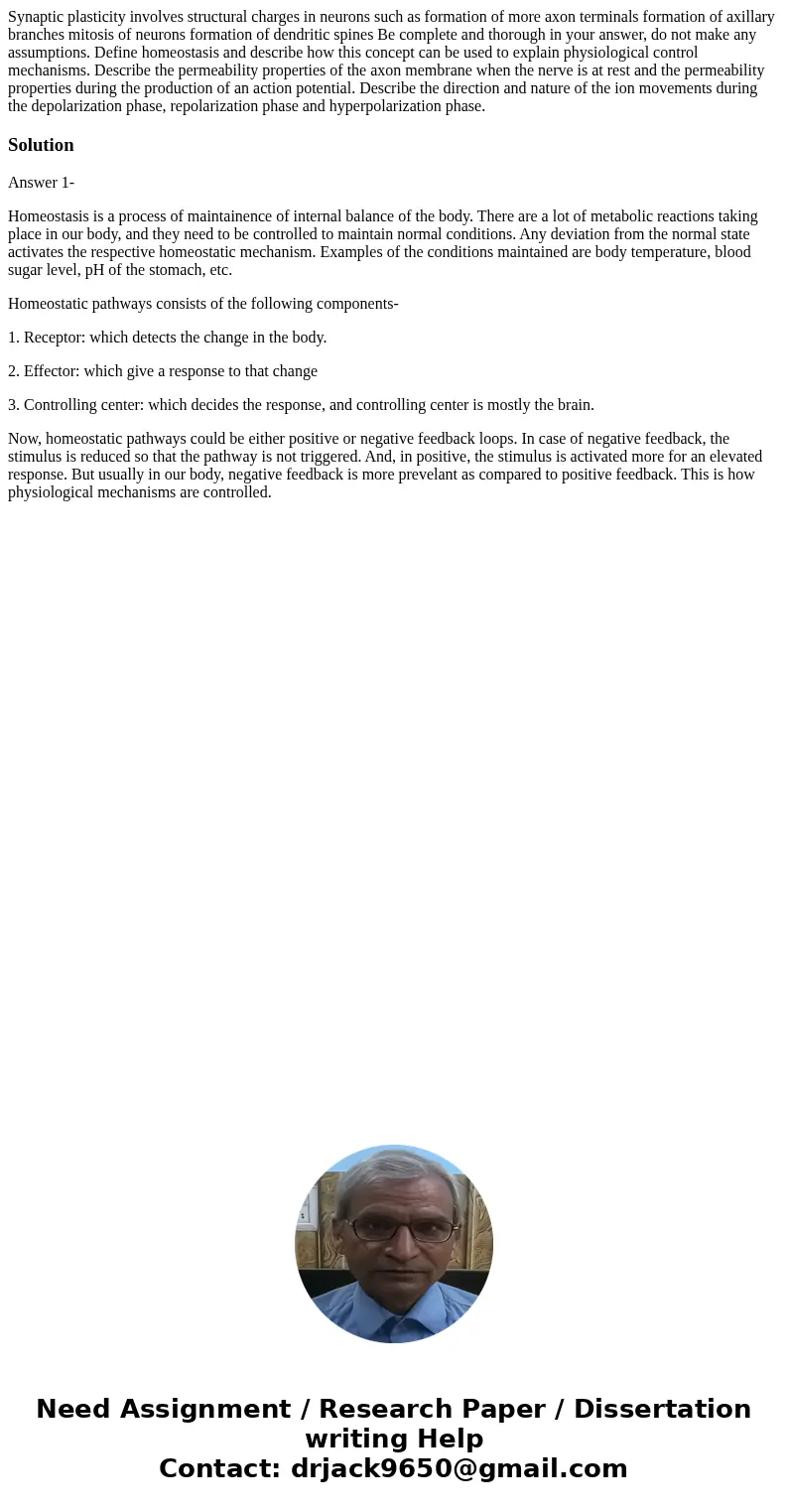Synaptic plasticity involves structural charges in neurons s
Solution
Answer 1-
Homeostasis is a process of maintainence of internal balance of the body. There are a lot of metabolic reactions taking place in our body, and they need to be controlled to maintain normal conditions. Any deviation from the normal state activates the respective homeostatic mechanism. Examples of the conditions maintained are body temperature, blood sugar level, pH of the stomach, etc.
Homeostatic pathways consists of the following components-
1. Receptor: which detects the change in the body.
2. Effector: which give a response to that change
3. Controlling center: which decides the response, and controlling center is mostly the brain.
Now, homeostatic pathways could be either positive or negative feedback loops. In case of negative feedback, the stimulus is reduced so that the pathway is not triggered. And, in positive, the stimulus is activated more for an elevated response. But usually in our body, negative feedback is more prevelant as compared to positive feedback. This is how physiological mechanisms are controlled.

 Homework Sourse
Homework Sourse